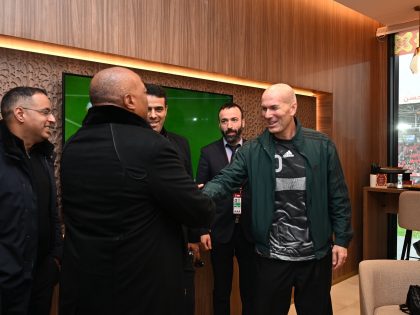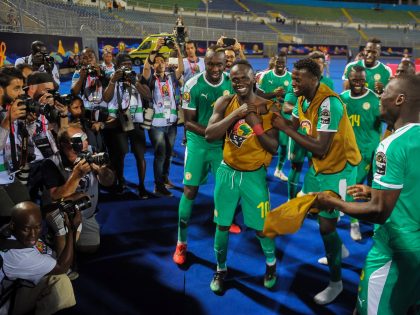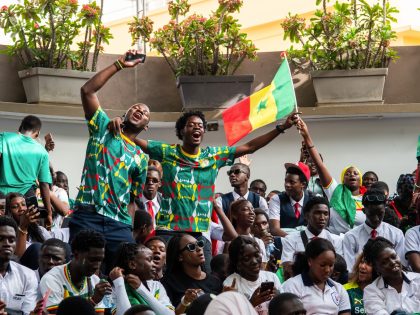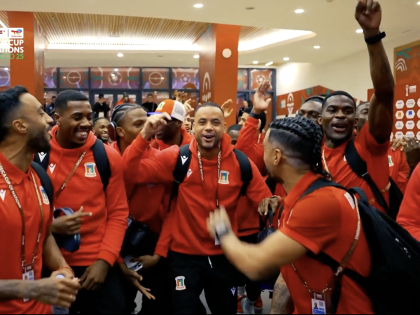Not Socrates’ Brazil
Brazilians have a complicated relationship to the Seleção, clouded by political crises, the parliamentary coup and the decline of a national style.

Image: Scott MacDonald (via Flickr CC)
Still celebrated in those lands without an equivalent object of pride of their own, in Brazil, the Seleção may no longer bring the same gleam to national eyes. The country’s organic crisis has served to dull the glow of that iconic yellow jersey. A national symbol, the shirt has become an object of dispute in an intensely polarized Brazil. Would success at the World Cup go a way toward redeeming it?
It is heartening to see images of celebration on Lebanese or Jamaican or Haitian streets following another victory for the Seleção in Russia, another step towards the Hexa. It may be the benefit of geographical distance, but that footballing gusto seems so much more uncomplicated than it does here in São Paulo. In this football-mad megalopolis, as elsewhere in Brazil, excitement about the World Cup has until recently been muted. Three weeks before kick-off, two-thirds of Brazilians claimed to have little or no interest in the Cup, according to a survey. Fifteen percent did not even know where it was to be held.
It may be that the most passionate Seleção fans are anyway found elsewhere. For most Brazilians, it is club success that really gets the passions racing. It is also notable that the greatest enthusiasm for the national team is found precisely in those parts of the country without big clubs to carry their dreams of glory. The metropolises of the South-East of the country, of which São Paulo is the largest, is not the best gauge for national team zeal. Nevertheless, the diminished standing of the national team demands explanation; the confluence of historical, social and footballing factors laid out.
Every day another ‘7×1’
If anyone abroad had to guess why we might all be down on the team, they would probably point at the albatross of “the 7-1”; when Germany embarrassed Brazil in the semifinal of the World Cup–in Brazil. A defeat comparable – but still lesser in magnitude – to the Maracanazo of 1950, the Mineiraço of 2014 weighs on footballing psyches. However, it is not just for footballing reasons that passions may have lessened. After all, anyone who watched Tite’s Brazil storm through qualifying – beating Argentina 3-0 in Belo Horizonte or Uruguay in Montevideo 4-1 – could hardly fail to be a little enthused by the performances of a rejuvenated team.
Instead, the causes are more deeply rooted than the valence of recent results. As attested to by innumerable vox pops on news programmes that questioned passers-by about the lukewarm feelings, “é a crise, né” (it’s the crisis, innit). And what a crisis! A concatenation of street protests, economic depression, political disarray, the exposure of massive corruption, all culminating in a parliamentary coup, has left Brazilians reeling.
What began as broadly democratic but inchoate protests in 2013 and 2014 (remember that backdrop to the Confederations and World Cups?) morphed into a right-wing campaign to impeach the (by then unpopular) Workers’ Party president Dilma Rousseff. The banner raised was ‘fighting corruption’; the mood, deeply anti-political; the consequence, to take down the Left – and perhaps democratic politics as such. Befitting protesters claiming, “my party is Brazil” – a way of casting themselves as defenders of the national interest, contra partisan leftism – they draped themselves in the iconic canary-yellow Brazil jersey.
Massive street protests, cheerled by most of the media, suddenly gave the shirt a new symbolic incarnation. Wearing it in 2015-16 positioned you, politically. If you were even vaguely on the Left, you wouldn’t be caught dead in it. (In the most heated days before the April 2016 impeachment, wearing a red t-shirt could conversely see you given the side-eye, or worse). But it wasn’t just a question of politics, but of class. The most visible figures ostentatiously wearing the shirt were notably richer (and whiter) than most the population. The anti-corruption protests did have a broad base of support, well beyond the protest’s upper-middle class vanguard. But the class dimension could hardly go unnoticed.
One instance went viral beyond Brazil. A white, middle class couple dressed in commemorative gold and green shirts of Rio club Flamengo (normal colours red and black), trailed by their black maid pushing the stroller. Meanwhile, huge pro-impeachment protests saw masses of (on average better-off) people wearing the official Brazil shirt. The irony of it all was that these ostensible ‘anti-corruption’ warriors were flaunting the shirt of one of the most corrupt national institutions. Meanwhile, for that part of the population that remained sceptical, seeing these protests for what they were – or were becoming – this was just another hypocrisy. And the biggest hypocrisy was yet to come.
Brazil deforms
Brazil today finds itself with an unelected President with a 3% approval rating, possibly the least popular leader of a formally democratic country in the world. Following the impeachment, the government installed to purportedly fix the country and free it from its corrupt predecessor proved itself to be significantly more corrupt than the last. It has been attempting to take Brazil 20 years backwards in two.
Elections loom this October. But with the most popular candidate, Former President Lula, imprisoned and ineligible – and a seething anti-political mood seizing the country – rejection rates are stratospheric. Blank or scratched ballots lead opinion polls. Add in the ‘don’t knows’ and something like 42% currently prefer no one rather than any given someone. A near-absolute majority of Brazilians believe the impeachment was a coup. And what ushered us to this point was mass mobilisations of people wearing the national team shirt.
The Brazil that may still gleam in the eyes of some countries in the global periphery and semi-periphery – that country symbolically exported by the Seleção of the 1950s till the 80s – perhaps does not exist anymore. It is a much more sarcastic, maybe cynical place, worn down by the dashed disappointments of yet another unrealised future. Where the modernist optimism of the late 50s/early 60s was dashed by military coup, the inclusive growth of the 2000s under a benign government crashed into the wall of still-frustrated expectations, economic crisis, rising violent crime, and political – well, I believe this is the technical term – clusterfuck.
In footballing terms, this too may be a more sardonic, even angrier Brazil. To the extent one can read something into memes – and Brazil loves meme-ing everything – its visible in its new mascot Canarinho Pistola (pissed-off canary). Compare the happy-but-naïve support/mascot/manager/Neymar of the 7-1 versus that of today.
What happened to us?
This more dogged, organised Brazil may very well win the World Cup. It may even do so with dashes of the old beauty. But it will be in moments. It is a garnish; at best, a seasoning. The Seleção that was a world-famous testament to Brazilian innovation, technique and success, exists only in the memory. The Hexa will be won by what would merely be a successful football team; one that beat its opponents by being just a bit better than them.
What those eulogised teams of old exhibited to the world was a national style. Not only did it inaugurate a holistic way of playing, but also echoed something in the country itself, and paraded its virtues. There was verve, invention, a musicality to the play. Moreover, the teams were also in the vanguard of technical and medical preparation. Brazil today, in contrast, plays much the same as many European nations. Indeed, it feels the need to imitate in order to succeed, often to the consternation of traditionalists in Brazil. And worse, it tails European ways, always five years too late.
Of course, it may be that the aspiration to creating a national style is a vain one in today’s age of globalized football. Yes, perhaps the Spain of 2008-12 managed it – the only national team to achieve the sort of success and admiration conquered by the Brazil of 1958-70. But that was FC Barcelona’s creation. Spain merely nationalised it.
For a feat like that to be accomplished again would require a single club to assume a centrality in the national game impossible in Brazil. This because it is too divided by big club loyalties. But also, and more importantly, because nearly all its top talent gets exported. The Brazilian league is now just a place for interns and decrepit grandees, for promising teens and over-the-hills. Those in their prime are not those with potential. Given all this, it is hard to see Brazil creating a truly unique and beautiful footballing thing of its own that might propel the Seleção; and win friends and influence people.
A similar feat is beyond the ken of most top footballing nations now too. But perhaps what jars so much in Brazil’s case is that this mirrors a more fundamental failure: the absence of a national project. In social, economic, political terms, the country, one feels, is up for sale. Key assets are sold to foreign investors or hoovered up by unscrupulous domestic entrepreneurs (read corrupt politicians and corrupting enterprises); all this, much like with its footballers.
Winning the country back
Now that Brazil has entered the latter stages of the Copa, your senses can not deceive you: the World Cup is on. You can see the flags, hear the honk of horns and buzz of vuvuzelas, smell the fireworks and barbecues. It’s Brazil, after all, we couldn’t help but get wrapped up in it all. And it might be a nice consolation to know that the team can still perform on the greatest stage, that something in Brazil still excels.
It is also nice that it might inspire. The admiration from Jamaica or Haiti or Lebanon is welcome. But this can only inspire an amour propre, a relational sense of self-worth. If anything, Brazil has for a long time been over-attuned to how it is seen abroad, too ready to glory or admonish itself off the back of coverage in a European or North American newsweekly. What it needs is a sense of conviction and confidence, driven by internal necessity: an amour de soi. Perhaps Brazil might once again be able to pursue excellence, not by imitating, but by creating something that gives voice to so much suppressed, confounded creativity.



















